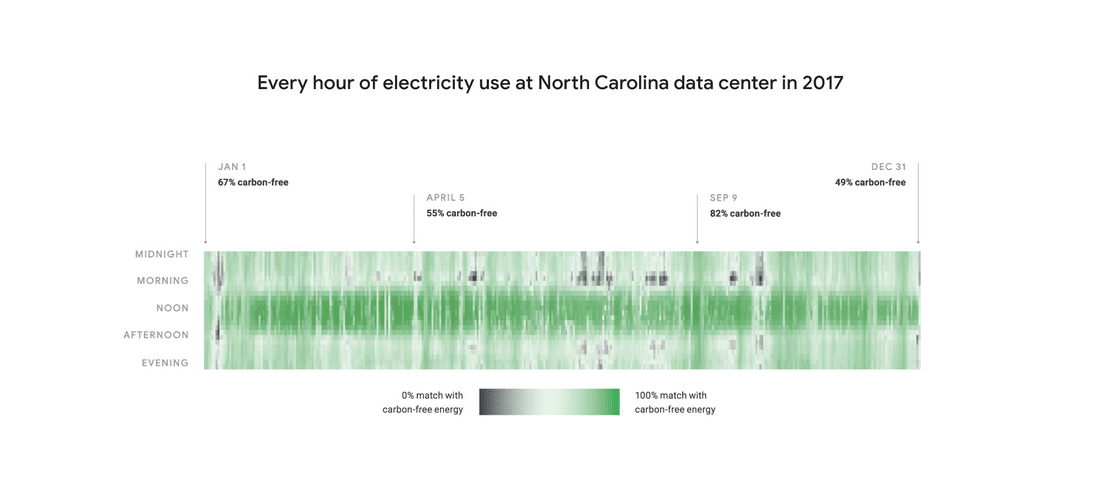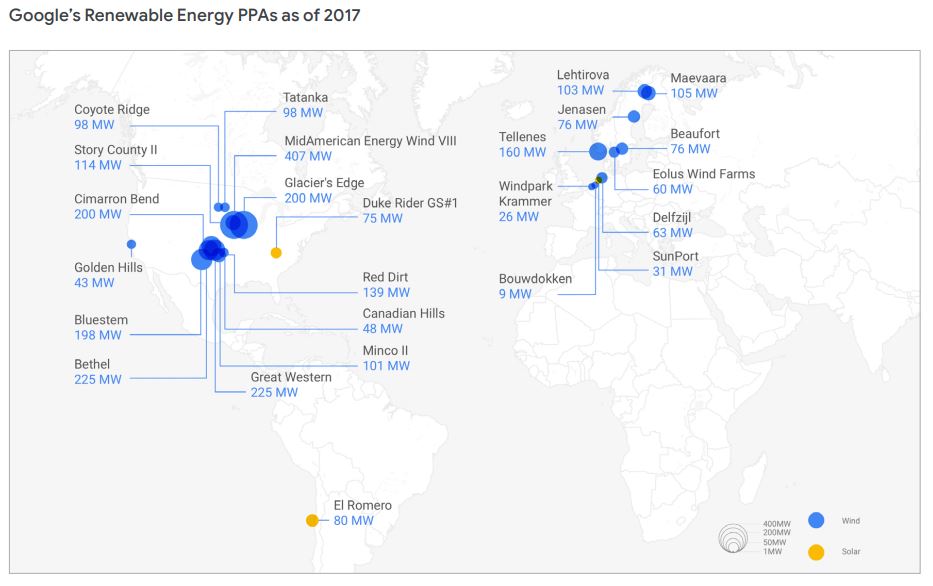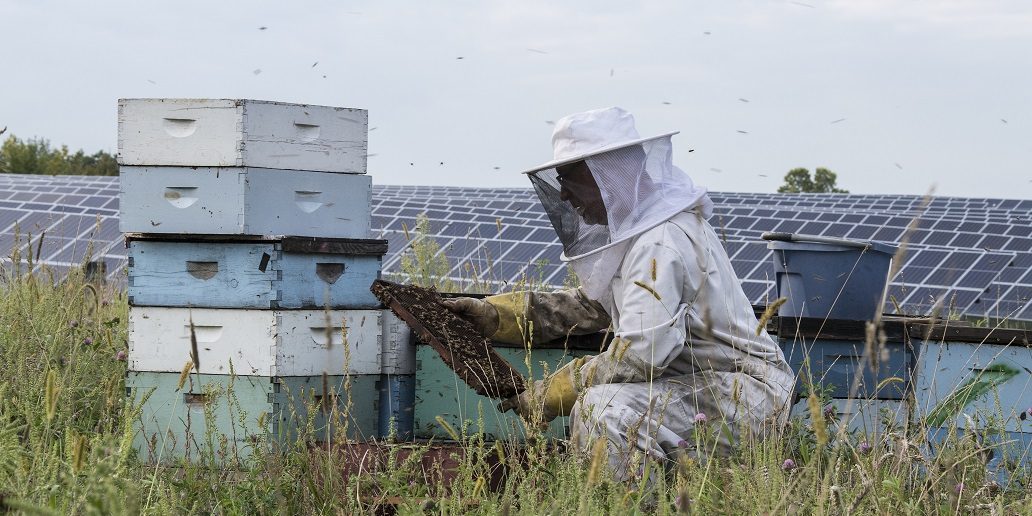Stop me if you’ve heard this one before – “What happens when the sun goes down, and the wind stops blowing?” Yeah, we get it. The world’s solar+wind development is early in this growth, and it’s easy to attack in these first decades of development and global deployment.
Smart researchers are looking at the problem – for instance we’ve got a great analysis showing how solar+wind complement each other and can get us to 80% renewables easily in the USA. Easily being defined as 12 hours of energy storage – about 5.4 TWh worth.
Google is now paying attention to this as well, and since corporate entities are absolutely driving renewable update, corporate attention on this issue will also drive the development of solutions. Google is specifically aiming to use only ‘clean energy’ 24/7.
As an energy security researcher once said,
Spatial and temporal specificity will likely be the new high bar for corporates and others going "100% renewable"
— Wes Herche (@WesHerche) April 15, 2018
As of 2017, Google was sourcing 100% of its power from renewables. At the time, the company had signed 20 power purchase agreements (PPAs) with renewable facilities, for a total of 2.6 GW – including contracts for over 100 MW of solar.

While the company was able to power a Finland data center 97% CO2 free, its North Carolina facility (above) wasn’t so well covered.
When the sun is shining, our Lenoir data center is quite carbon-free (indicated by the midday green ribbon in the Carbon Heat Map below), but at nighttime it’s more carbon-intensive; we plan to tackle this issue in the coming years by procuring additional types of carbon-free energy.
In Google’s discussion paper on the topic, Moving toward 24×7 Carbon-Free Energy at Google Data Centers: Progress and Insights (27 page PDF), the company delves into multiple locations and their clean vs dirty energy realities much like the North Carolina facility above.
Google notes that their efforts to offset the annual electricity usage with 100% intermittent sources, wind and solar, have made meaningful inroads towards cleaning their usage – however – they’re pushing hard toward a more diversified set of carbon free sources because of the realities of the grid. The company is using significant amounts of clean energy from nuclear and hydroelectric sources – with Finland noted as being more than 40% nuclear+hydro. The company also notes, in areas where the grid is very carbon intensive – even though the spatial timing might not be perfect – it is still a carbon beneficial to sign standard intermittent PPAs.

This content is protected by copyright and may not be reused. If you want to cooperate with us and would like to reuse some of our content, please contact: editors@pv-magazine.com.









By submitting this form you agree to pv magazine using your data for the purposes of publishing your comment.
Your personal data will only be disclosed or otherwise transmitted to third parties for the purposes of spam filtering or if this is necessary for technical maintenance of the website. Any other transfer to third parties will not take place unless this is justified on the basis of applicable data protection regulations or if pv magazine is legally obliged to do so.
You may revoke this consent at any time with effect for the future, in which case your personal data will be deleted immediately. Otherwise, your data will be deleted if pv magazine has processed your request or the purpose of data storage is fulfilled.
Further information on data privacy can be found in our Data Protection Policy.